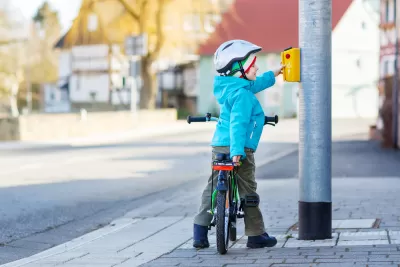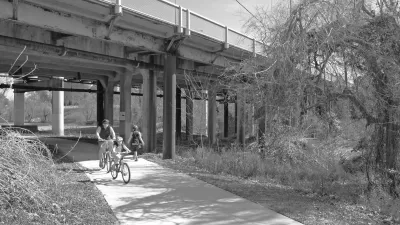A bike plan isn't meant for the peloton. Here's how you can tell.

Chris and Melissa Bruntlett share their take on "a seldom-discussed measure of a city’s bike-friendliness: the speed at which its cyclists travel." Their opinion on the subject is stated thusly: "the slower the people on bikes were moving, the more mature the bicycle culture, and the better the conditions for cycling."
The difference is played out in the difference between what people consider "cyclists" and the rest of us. "Cycling" is considered a sport—one that requires lycra at the lowest levels and performance enhancing drugs at the highest levels. The Bruntletts, however, are more concerned with the rest of us, and they noticed four signifiers that exhibit a mature city for biking: the kinds of people biking, the types of bikes they are riding, the kinds of trips people on bikes are taking, and the kinds of bike infrastructure available in the city. The Bruntletts describe how the first of those four points works:
Upon arrival in a new city, a cursory glance at the types of people choosing to cycle there will tell you a great deal about its bike-friendliness. The places with the widest variety of ages and abilities can be considered – without exception – the most successful, with a greater number of women, children, and seniors on bikes a surefire sign you’re doing something right. That diversity brings with it a slower-paced, more relaxed environment, that is far more welcoming to the “interested but concerned” crowd.
On the last point, according to the Bruntletts, certain types of bike infrastructure are built to ensure that people on bikes feel willing and able to slow down and enjoy the ride. The final twist of this argument: that the first three of those points don't become a reality until the last one does.
FULL STORY: In praise of slow cycling

Alabama: Trump Terminates Settlements for Black Communities Harmed By Raw Sewage
Trump deemed the landmark civil rights agreement “illegal DEI and environmental justice policy.”

Planetizen Federal Action Tracker
A weekly monitor of how Trump’s orders and actions are impacting planners and planning in America.

The 120 Year Old Tiny Home Villages That Sheltered San Francisco’s Earthquake Refugees
More than a century ago, San Francisco mobilized to house thousands of residents displaced by the 1906 earthquake. Could their strategy offer a model for the present?

In Both Crashes and Crime, Public Transportation is Far Safer than Driving
Contrary to popular assumptions, public transportation has far lower crash and crime rates than automobile travel. For safer communities, improve and encourage transit travel.

Report: Zoning Reforms Should Complement Nashville’s Ambitious Transit Plan
Without reform, restrictive zoning codes will limit the impact of the city’s planned transit expansion and could exclude some of the residents who depend on transit the most.

Judge Orders Release of Frozen IRA, IIJA Funding
The decision is a victory for environmental groups who charged that freezing funds for critical infrastructure and disaster response programs caused “real and irreparable harm” to communities.
Urban Design for Planners 1: Software Tools
This six-course series explores essential urban design concepts using open source software and equips planners with the tools they need to participate fully in the urban design process.
Planning for Universal Design
Learn the tools for implementing Universal Design in planning regulations.
Clanton & Associates, Inc.
Jessamine County Fiscal Court
Institute for Housing and Urban Development Studies (IHS)
City of Grandview
Harvard GSD Executive Education
Toledo-Lucas County Plan Commissions
Salt Lake City
NYU Wagner Graduate School of Public Service





























